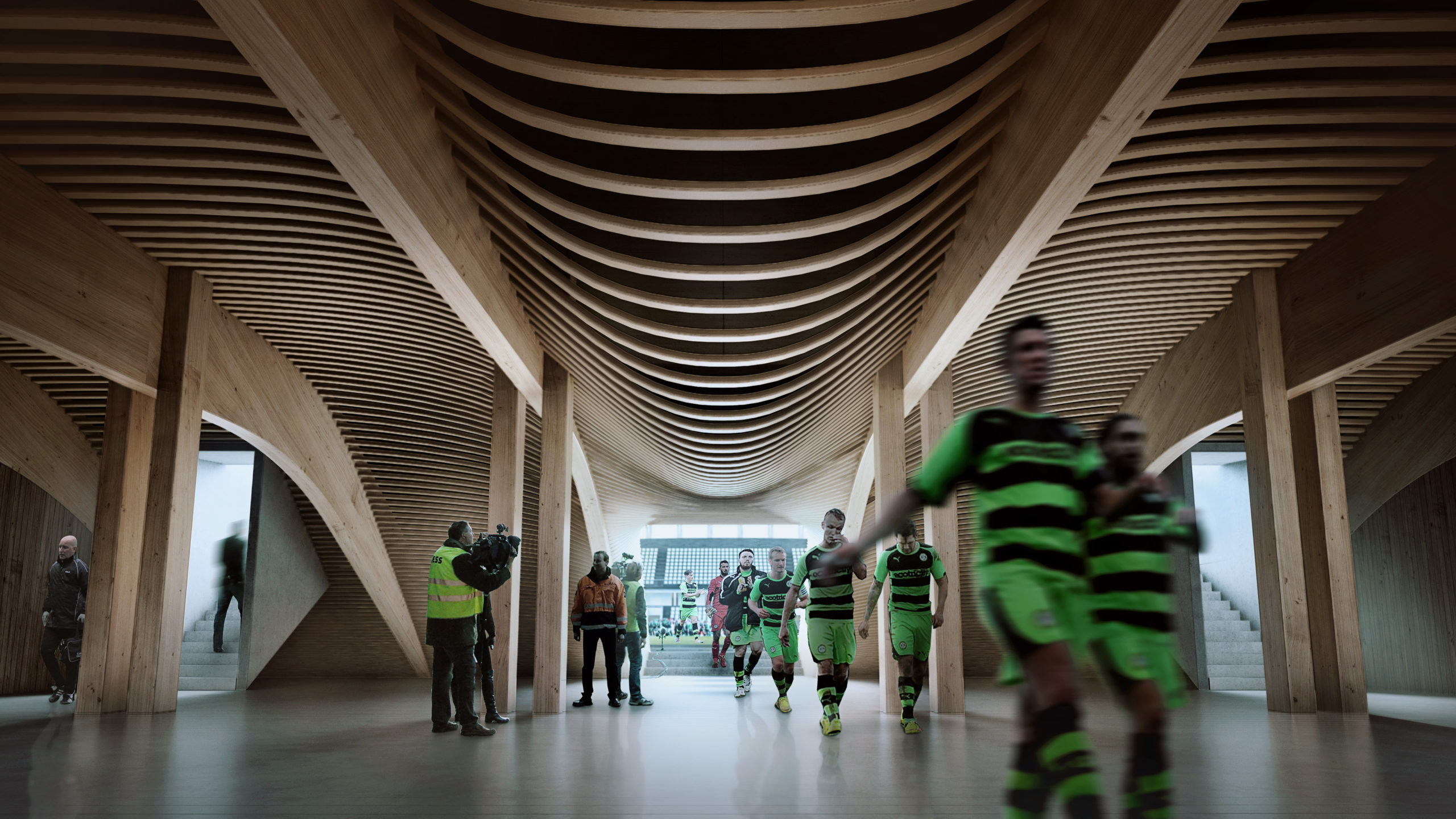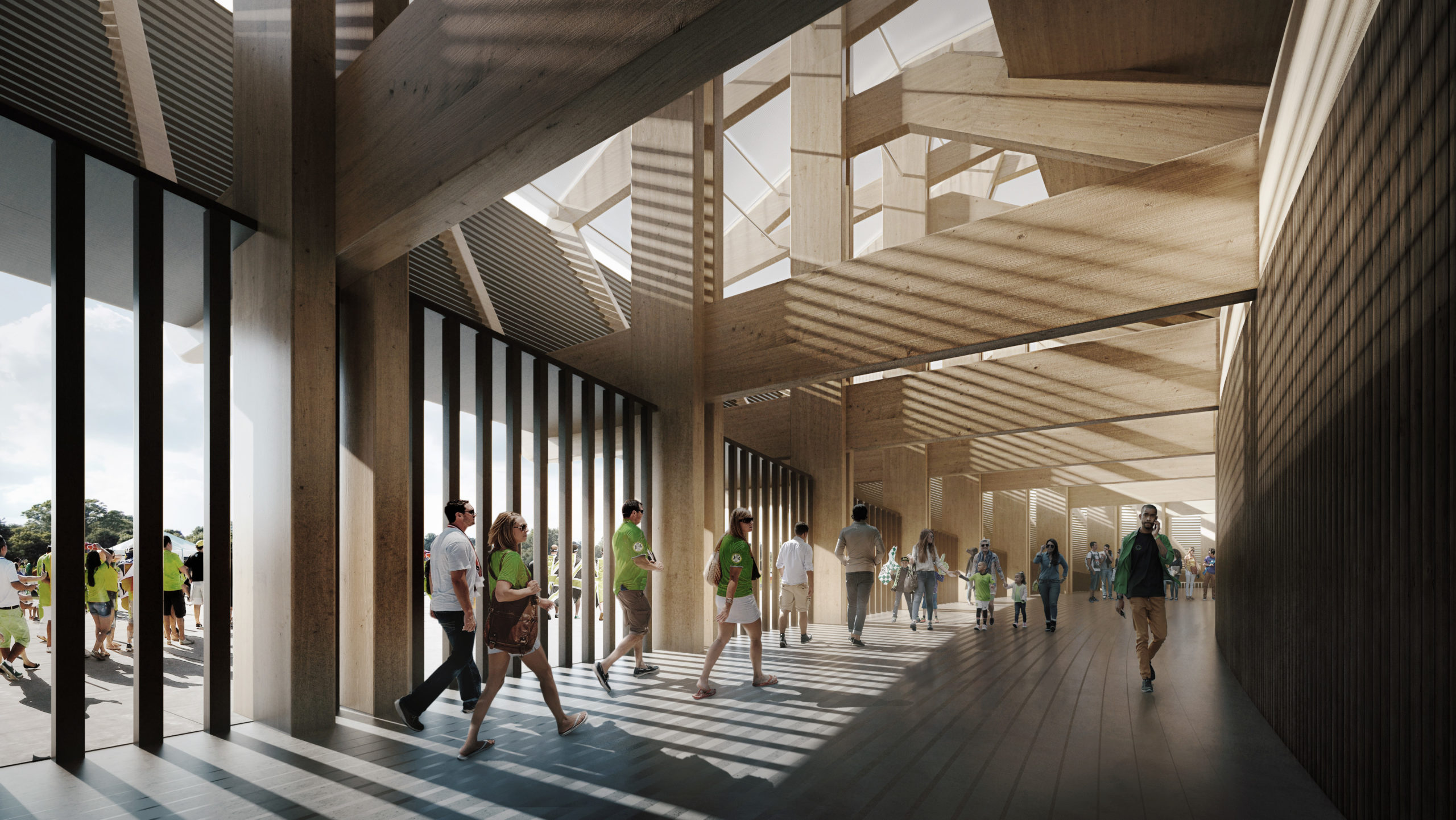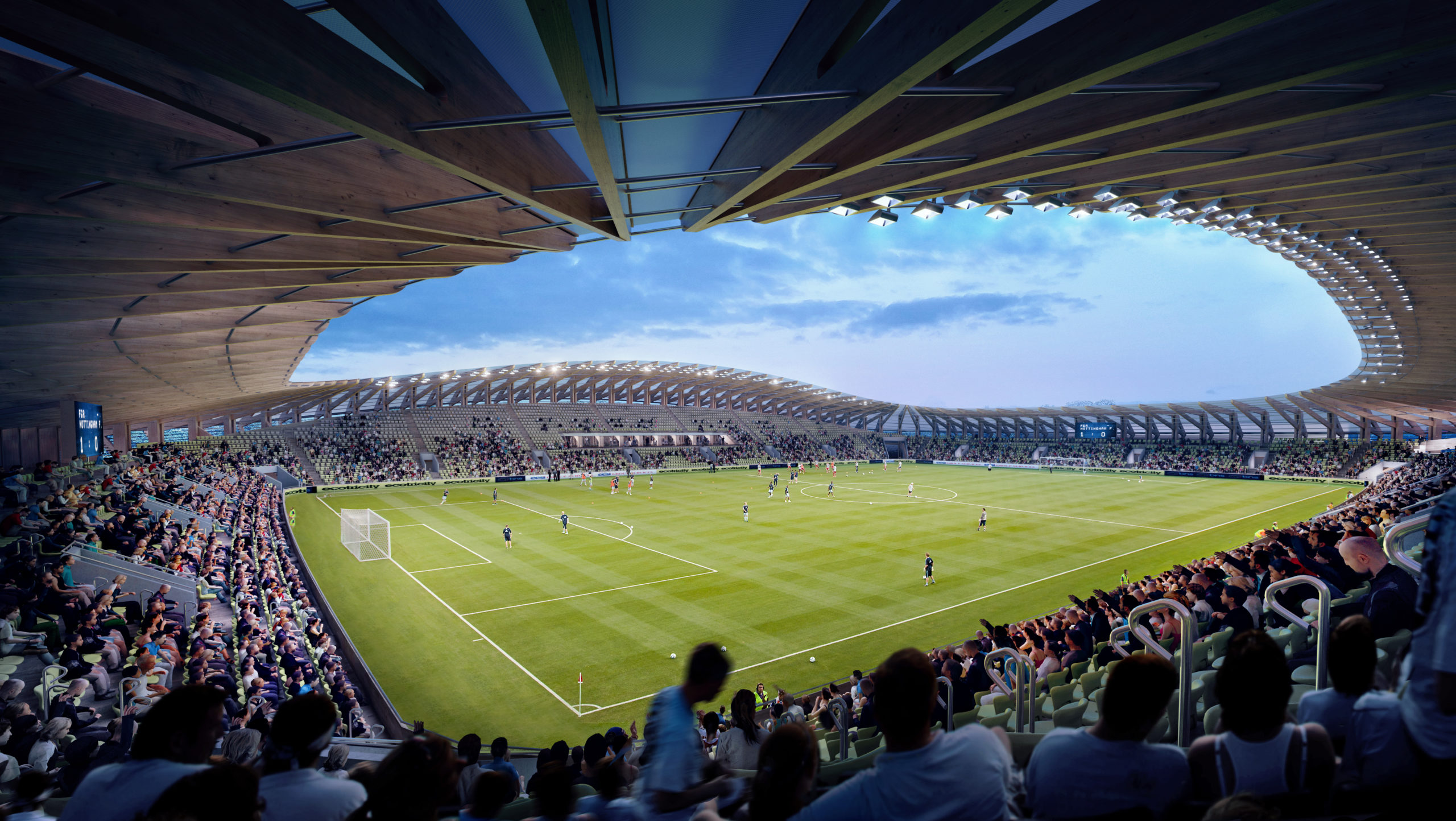August 25, 2020
Marketing, Communication and Management
Social Impact
Smart Facilities
THE STADIUM WITH THE SMALLEST CARBON FOOTPRINT EVER BUILT
There are two things that the president of the Forest Green Rovers, does not admit in his football club: that players eat red meat, or that fans can buy it at the stadium. But veganism is just one of the philosophies that Dale Vince has passionately embraced. The other is his absolute commitment to sustainability. The company he founded in the nineties, Ecotricity, produces 100% of its energy from renewable sources to supply its customers in the UK. Passionate about sports, he has turned the Forest Green FC stadium into an experimentation laboratory to achieve a building with the least environmental impact, transferring his findings to the rest of society. Now he will go further, turning his club’s headquarters into the first stadium entirely constructed with wood, and therefore, the smallest carbon footprint sports building ever built.

This is at least the categorical statement of the renowned architect Zaha Hadid, whose studio won the international competition to build the new EcoPark. According to her words, “three-quarters of the carbon impact of a football stadium comes from the concrete used to build it.” It is an equation almost impossible to solve: the material par excellence of the construction is unecological, due to the energy that is needed to obtain it from raw materials, and a large amount of water that it requires to process it. But at the same time, it has been more than a hundred years providing optimal structural solutions to architecture. Substituting it, as in this case, for wood, forces the beams to be much closer to each other and sets limits to the building design.
The studio has demonstrated that this does not have to affect a stadium. The grandstand design, very fluid, will guarantee optimum vision for all attendees, with a separation of just five meters between the grass and the first row of seats. Entrances, accesses, and spaces for accessory facilities, such as food courts are similar to those of any other stadium. Designed for 5,000 spectators, it will allow future expansions to double that capacity. The use of wood, from sustainable forests, is not even limited to the structure: the floors, stands, seats and the rest of the elements of EcoPark will be made using this material.

But the interesting thing about this stadium is not only its architectural project, but the management challenges posed to the club’s management team. The challenge was threefold: respond to the President’s aspirations, meet the demands of Gloucestershire County and the town of Stroud in which it is located, and make the project economically viable. Difficulties that explain why Zaha Hadid won the contest in 2016, but Forest Green did not get a building license until late last year.
The first difficulty was the dimension of the project itself. The EcoPark responds to the modern concept of a comprehensive stadium, including both the building where the matches are held and a sports science centre, training facilities and a business park for green technology companies, with commercial and industrial offices built sustainably. This idea will make the stadium profitable both on matchdays and the rest of the days of the year. An ambitious idea that collided with the mayor of the city of Stroud, headquarters of the club.
The tradition of urban planning licenses in the United Kingdom requires that any project, from a house to a stadium, receives approval by the majority of its neighbours. The five thousand seats and the business park could mean, especially on matchdays, traffic jams on the nearby M5 motorway, and therefore, inconveniences if the Forest Green did not properly manage the parking and accesses. Besides that, it faced the challenge of erecting a stadium in the AON environment, Areas of Outstanding Natural Beauty. Special landscape protection areas that intend to keep intact the appearance of the English countryside. Consequently, it was necessary to convince the city council and the neighbours that they were not going to saturate the city on the specific matchdays and to permanently collapse the roads with the business park. And also, to Gloucestershire County that the stadium itself would not undermine the landscape protection of the AONs surrounding Stroud.

The negotiation has been performed for over three years, listening to the demands of the city while maintaining the original plan, introducing modifications. The work has required reaching agreements with the authorities and transferring their demands to the architecture studio. Finally, a solution has been found that makes everyone happy by accepting a major modification: the stadium roof has gone from being opaque to transparent. The typical sail-shaped structure that characterises modern stadiums, and whose maximum exponent is the “balloon” that surrounds the Allianz Arena in Munich, will allow seeing through when looking at the EcoPark from a distance, respecting the appearance of the landscape.
The next challenge, which will take place within a year, will be to start spending the £ 100m the project will cost. But the most difficult thing is done and shows that currently the construction or reform of sports stadiums is not limited to erecting buildings, but to managing a set of resources and interests from a global perspective.
Martín Sacristán
KNOW MORE
CATEGORY: MARKETING, COMMUNICATION AND MANAGEMENT
This model looks to the future with the requirements and demands of a new era of stadiums, directed toward improving and fulfilling the experiences of fans and spectators, remembering “feeling” and “passion” when designing their business model.
CATEGORY: FOOTBALL SPORTS PERFORMANCE
Through the use of computer vision we can identify some shortcomings in the body orientation of players in different game situations.
CATEGORY: MEDICINE HEALTH AND WELLNESS
A health check must detect situations which, despite not showing obvious symptoms, may endanger athletes subject to the highest demands.
CATEGORY: FOOTBALL TEAM SPORTS
In the words of Johan Cruyff, “Players, in reality, have the ball for 3 minutes, on average. So, the most important thing is: what do you do during those 87 minutes when you do not have the ball? That is what determines whether you’re a good player or not.”
CATEGORY: MEDICINE HEALTH AND WELLNESS SPORTS PERFORMANCE
Muscle injuries account for more than 30% of all injuries in sports like soccer. Their significance is therefore enormous in terms of training sessions and lost game time.
DO YOU WANT TO KNOW MORE?
- SUBSCRIBE
- CONTACT
- APPLY
KEEP UP TO DATE WITH OUR NEWS
Do you have any questions about Barça Universitas?
- Startup
- Research Center
- Corporate